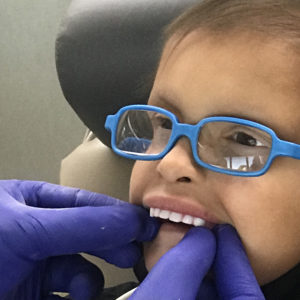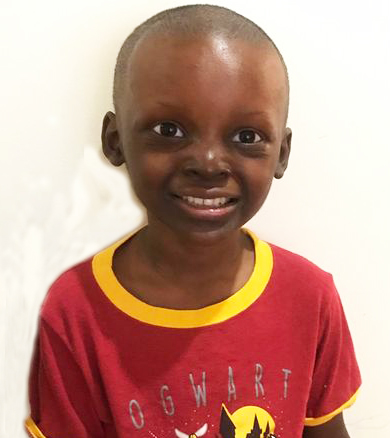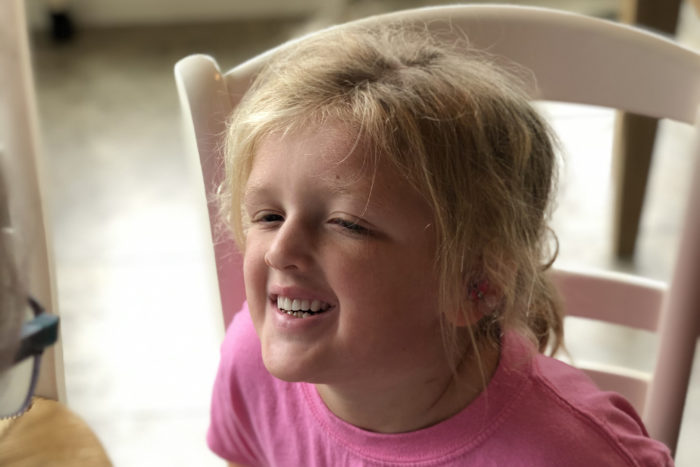How do you help your little ones affected by ectodermal dysplasia prepare for all of the dental visits they need? What can you do to explain and show them what getting dentures is going to be like? With 40 years of experience and resources, the National Foundation for Ectodermal Dysplasias (NFED) can help!
Many children with the condition have their teeth affected in some way. Missing many or all of their teeth is common. They will likely go to the dentist more often than their peers to treat their unique dental symptoms.
The NFED strongly advocates for children with ectodermal dysplasias to get dentures. The many benefits of replacing missing teeth are undeniable. The American Academy of Pediatric Dentistry recommends that all children first visit a dentist at one year of age or six months after the eruption of the first teeth, whichever comes first. That first visit will help you determine how many teeth your child might have and outline a dental treatment plan. For children affected by ectodermal dysplasias, many have successfully worn dentures as young as 2.5 years old.
Our Best Tips to Make Your Dental Visits a Success
Here are some suggestions for how to make your child’s experience at the dentist be a positive one. You will notice that many tips are about preparing yourself first so you can best help your kiddo. Other tips come from our families who have been there, done that.
- Educate yourself first. Learn everything you can from how to find a dentist to what will happen in the dental office throughout the denture-making process. Read A Dental Guide to the Ectodermal Dysplasias to get started.
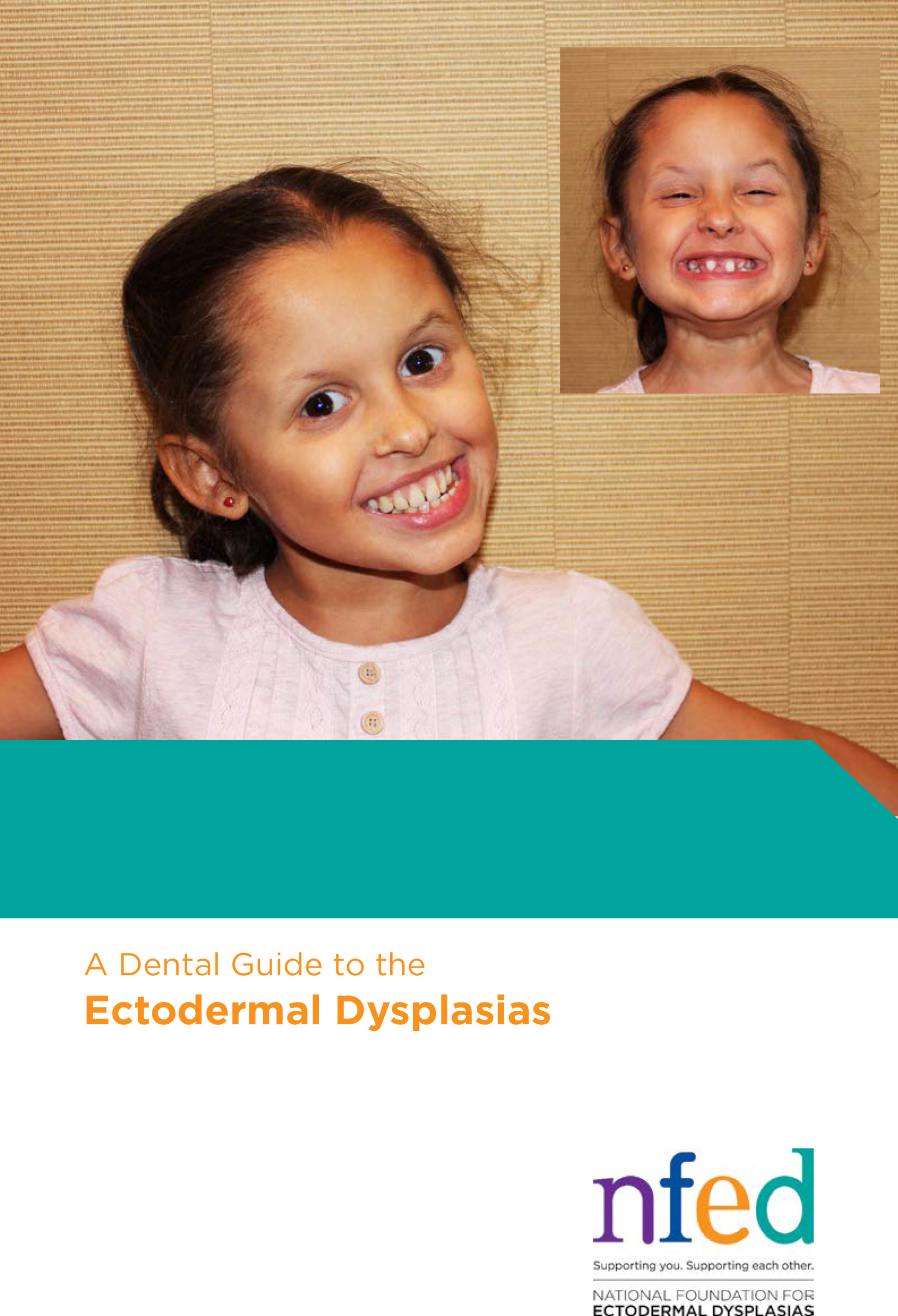
- Reassure yourself that indeed, toddlers can and do wear dentures successfully by reading He’s Too Young for Dentures! Children do not have to wait till they are in high school to get the treatment they need.
- Learn what our dental experts say about what treatment options are appropriate for children, zero to six years old, who are affected by ectodermal dysplasias. Read Parameters of Oral Health Care for Individuals Affected by Ectodermal Dysplasias.
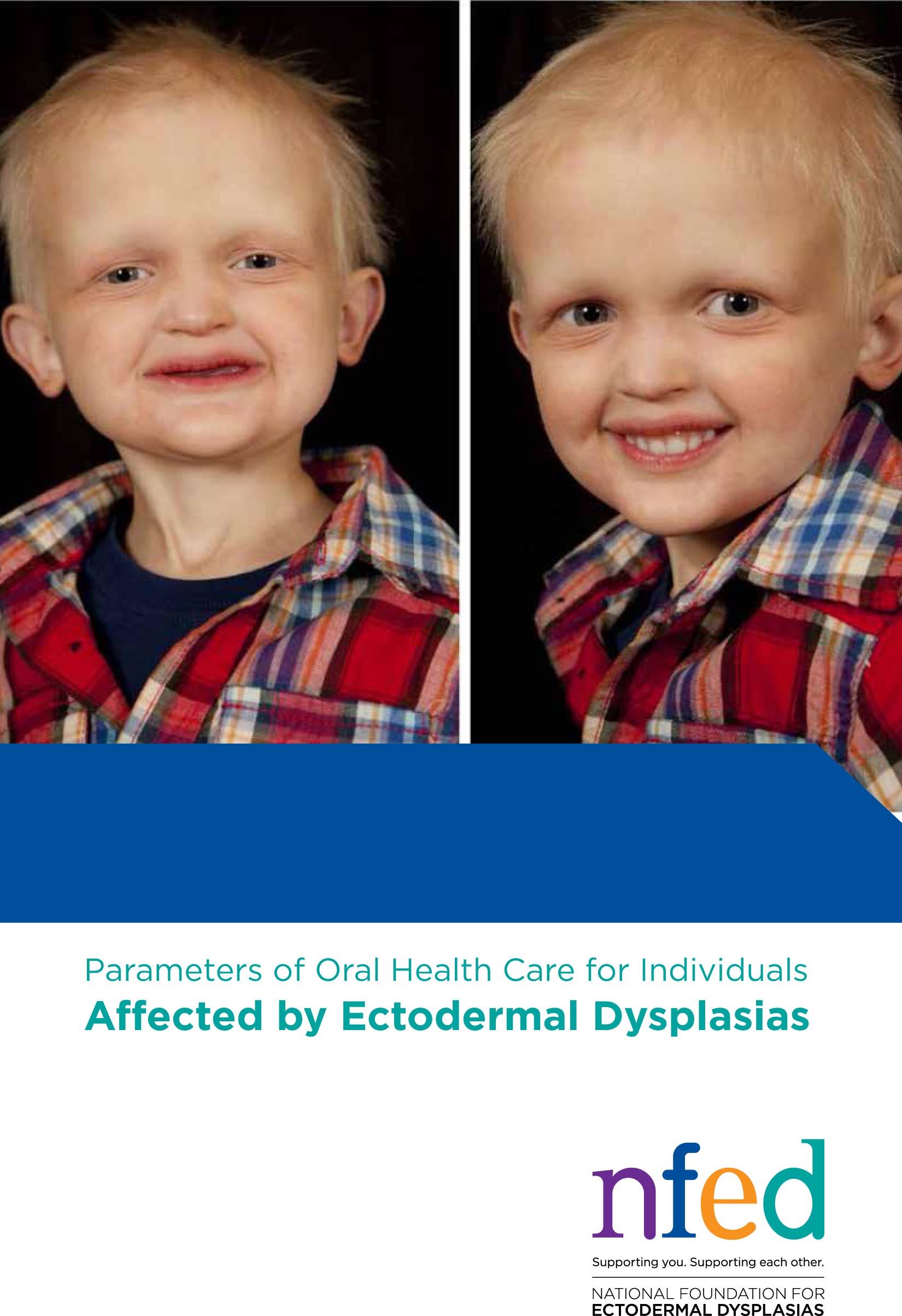
- Read “Taming the Angel in the Chair” to better understand when your child is ready for dentures and what behavior is normal. The late pediatric dentist, Dr. Frank Farrington outlines the process of what you can expect in making your child’s dentures. “In evaluating child behavior in the dental office, the dental staff and parents need to understand when a child is reacting normally to a new situation or when the child is reacting to the dental office in particular. When a child cries upon being separated from a parent at a dental appointment is this any different from that child’s reaction to mother leaving the child for the first time at a nursery? When the child fusses when examined, even if sitting in mother’s lap, is this any different than when the child has to ride in a shopping cart and wants to get out? It is a normal response for a young child to fuss as a mechanism to get out of something he or she does not like. If the child is reacting normally and not specifically to the dental office we know this is expected.” – Dr. Frank Farrington
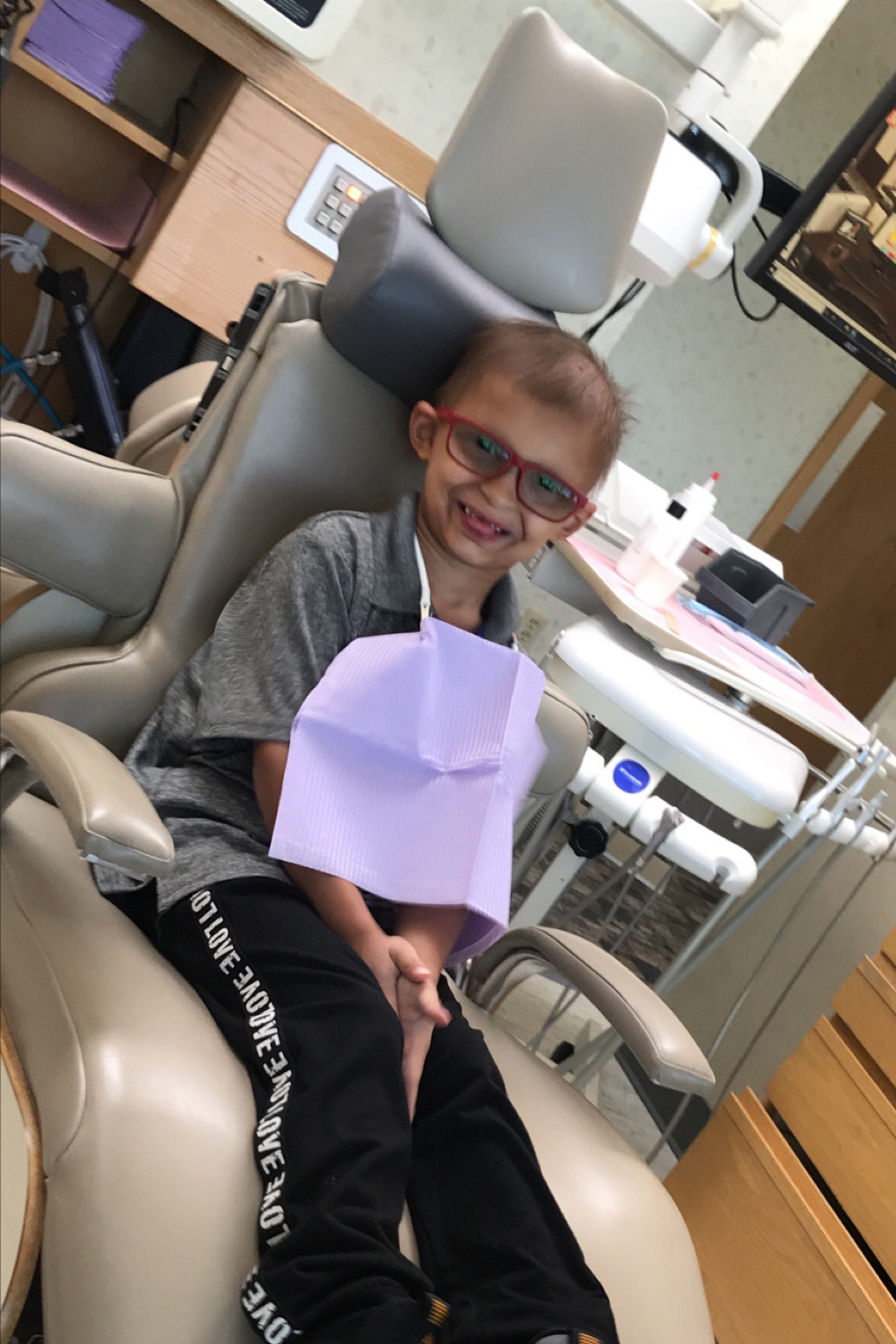
- Find out the Things to Know When Your Child Needs Dentures. Dr. Beau Meyer outlines the three types of dentures and when each might be used.
- Know that it’s normal and ok to feel overwhelmed as a parent. Read Sarah Hamilton’s story of her feelings about having her five-year-old daughter, Hazel, get dentures. The Colorado mom talks about the process, what she learned and why it was all worth it. “When it came to getting the actual impressions, we brought an iPad for our daughter to watch videos. We then did a mother-daughter date afterwards for ice cream after being at the dentist for almost two hours.” – Sarah Hamilton
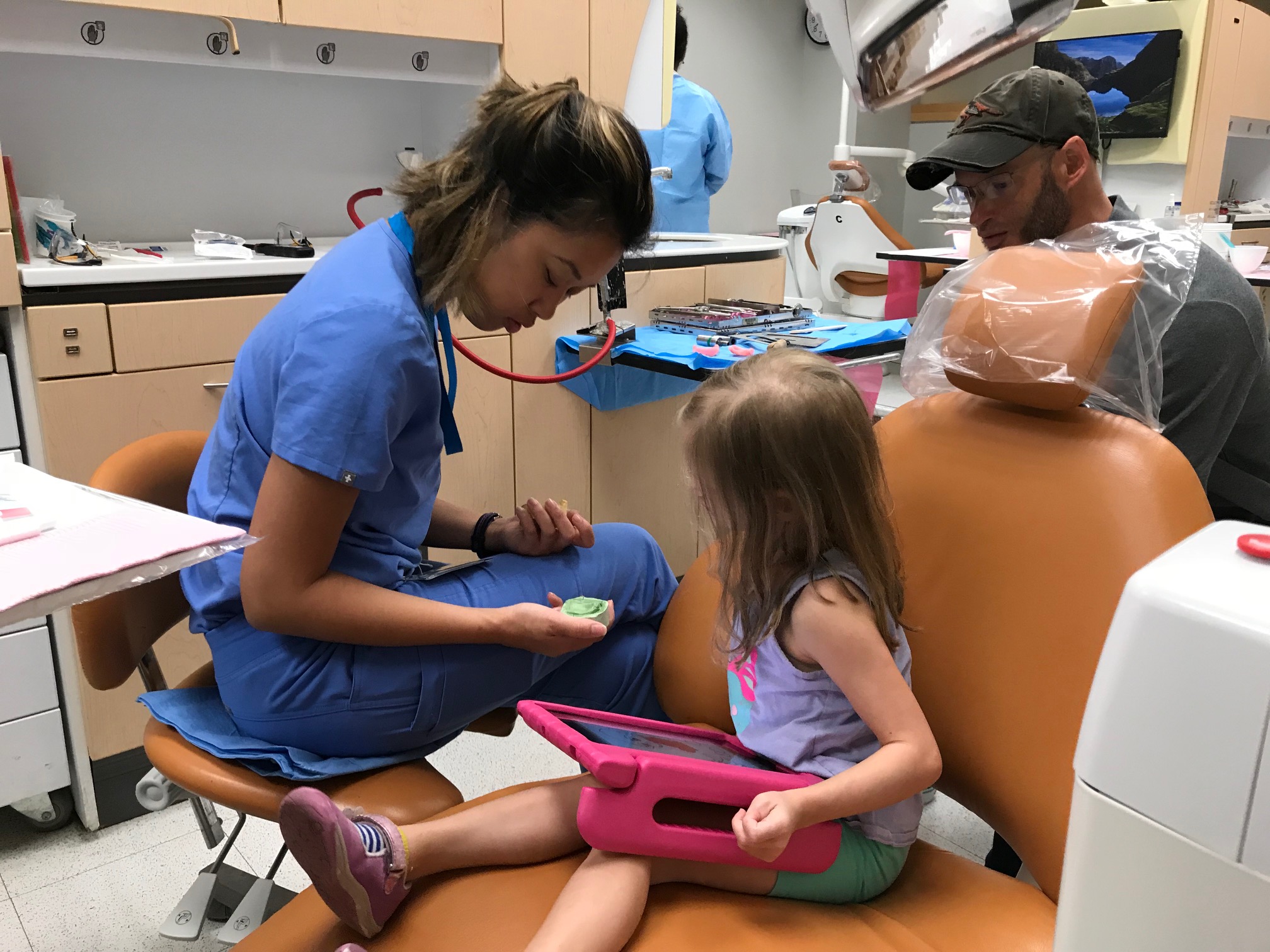
- Empower your child. NFED mom, Melissa Pierce, shares her approach. “When we get to an appointment or procedure, I remind them it is ok to be nervous but to listen to the dentist, doctor, or nurse, and it is ok to ask them questions at any time. I knew we had a long road with ectodermal dysplasia and I just wanted to empower them from early on and set a good foundation for them to take charge of their health care as they got older. I also learned sometimes it was better if I am just outside of my kid’s sight when they were having procedures done…(They had) less anxiety for some reason (maybe they could sense mine).” – Melissa Pierce
- Role play. Practice at home so that the impressions won’t be new when they do it for real in the dental office. Read Keegan’s Denture Adventure to learn how his mom, Lindsey James, used mashed potatoes to help Keegan experience what dental impressions would be like. “We were sent home with a Keegan-size impression tray. I stopped at a grocery store on our way out of Iowa City, and loaded up on instant mashed potatoes. We incorporated ‘potato training’ into our nightly routine.” – Lindsey James
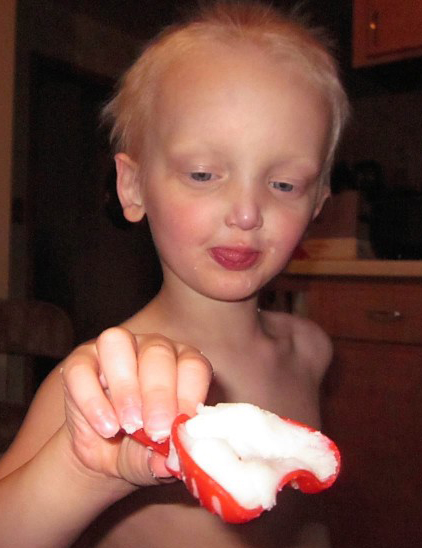
- Purchase “Carver’s New Smile” and read it to your child. Julie Claeys and her son, Carver, created this children’s photo book with the NFED to help others with ectodermal dysplasias know what to expect at the dentist. Carver is an adult now! Last year, he read the book on Facebook Live. You and your child can watch the recording of it.

- Show and tell. “I think that it is easier to sit through a procedure if you have a real life description of what is going to happen and if you know that it won’t take long. You could also get play dough and tools and make some stamps to show him what impression means. – Kari Faye Landry
- Use rewards. Adam Viccaro, who is an adult affected by hypohidrotic ectodermal dysplasia (HED), suggested, “Perhaps a reward for him after he gets through it. I once got stuck in the dentist chair almost an entire day after the connecting part of my bridge broke. My dentist promised me tickets to the local waterpark for sticking it out. It sucked, but that helped!”
- Clean their nose. Lindsay Taylor, who is affected by ectrodactyly-ectodermal dysplasia-clefting (EEC) syndrome, gave this great tip. “Be sure his nose is clear and free of gunk so he can breathe through his nose as the impression material can creep back your throat and make mouth breathing hard.”
- Choose the right words. Pediatric dentist, Dr. Tim Wright, says, “When describing the upcoming dental visit to a little one, always do so with positive language thereby helping set the stage for success. For example: ‘The dentist is going to talk with you about getting a smile with teeth that are cute and bright’.” Moriah, McPherson, a dental hygienist, shared similar sentiments. “Kids usually keep getting better and more comfortable with repetitive appointments. I’m always impressed how much they grow and mature in the preschool years. Also, be mindful of your words. Saying things like ‘don’t be scared’ or ‘it won’t hurt’ puts that thought into the child’s head.”
- Answer your child’s questions positively but honestly. “Do not make statements that create expectations that may be unrealistic. For example, don’t say ‘they are just going to look’ if there are going to be procedures beyond just looking.” – Dr. Wright
- Watch “Finley’s Denture Adventure” with your child. In this short video, Finley is a young boy affected by HED who just received his first dentures. His mom, Randi, talks with him and shows off his new smile.
Need to Talk It Through?
Hopefully, these resources and tips will help you and your child on the road to success. Always know that our NFED staff is just a phone call away at 618-566-2020 if you need more suggestions or just want to talk.
What have you found to work? We’d love for you to comment below.
